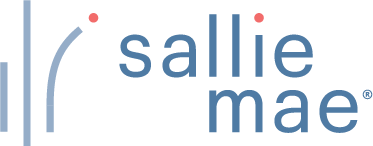Our goal is to give you the tools and confidence you need to improve your finances. Although we receive compensation from our partner lenders, whom we will always identify, all opinions are our own. Credible Operations, Inc. NMLS # 1681276, is referred to here as "Credible."
If you’re interested in continuing college classes in the summer to get a jumpstart on your education or fit your work schedule, you might be looking for ways to pay for your summer semester. Thankfully, there are many summer financial aid options that can help.
Here’s what you need to know about summer financial aid:
- First, check with your school
- Apply for summer financial aid and federal loans
- Check rates for private loans
- Alternatives to loans for summer classes
First, check with your school
Federal student loans for summer classes are very similar to those for fall and spring semester. The Free Application for Federal Student Aid (FAFSA) you fill out for the rest of the school year is used by your school to award summer financial aid, too.
However, because of how the FAFSA and student aid calendars work, it’s a good idea to check with your school’s financial aid office to make sure your summer classes will be covered by your student loans.
Apply for summer financial aid and federal loans
Keep in mind that federal student loan limits apply to the entire academic year. That means your loans have to last through the spring, fall, and summer terms. Before signing up for summer classes, review your financial aid package for the year to decide if summer classes are right for you and your financial situation.
Also, be sure that you’ve applied for the correct FAFSA year for summer school. For classes from July 1, 2020, through June 30, 2021, you’ll fill out the 2020-2021 FAFSA for summer financial aid. For summer classes before July 1, 2020, submit the 2019-2020 FAFSA form instead.
Here are some of the federal student loans available for summer school:
- Direct Subsidized Loans: These loans are only available to undergraduate students with financial need, but if you qualify, they’re a great choice. That’s because the government pays interest on subsidized loans while you’re in school, as well as during grace and deferment periods.
- Direct Unsubsidized Loans: Both grad and undergrad students are able to get unsubsidized loans, as there’s no financial need required to qualify for them. But unlike subsidized loans, you’ll have to pay the interest on unsubsidized loans from the time they’re issued, including when you’re in school.
- PLUS Loans: PLUS Loans are available to both parents and graduate students. But keep in mind that these loans come with higher interest rates and require a credit check. If you have excellent credit, you might be able to save money with a private student loan.
Learn More: How to Apply for Student Loans
Check rates for private loans
If you’ve hit your limit for your federal student loans and still need summer financial aid, private student loans might be a good choice, especially since they’re available all year round. Some private student loans offer better interest rates than federal loans, too, so it’s a good idea to compare several options.
When looking at private student loans, be sure to consider as many lenders as possible to find the right loan for you. You can easily compare the lenders in the table below with Credible — and you can see your rates in as little as two minutes.
| Lender | Fixed rates from (APR) | Variable rates from (APR) |
|---|---|---|
 | 3.79%+10 | 5.99%+10 |
 | 4.24%+1 | 5.99%+ |
 |
3.99%+2,3
| 5.59%+2,3 |
 | 4.24%+ | 5.44%+ |
 | 4.8%+8 | 7.75%+8 |
 | 5.75%+ | N/A |
 | 4.150%9 - 15.49%9 | 5.37%9 - 15.70%9 |
your credit score. 100% free! Compare Now |
||
Lowest APRs reflect autopay, loyalty, and interest-only repayment discounts where available | Read our full methodology | 10Ascent Disclosures | 1Citizens Disclosures | 2,3College Ave Disclosures | 11Custom Choice Disclosures | 7EDvestinU Disclosures | 8INvestEd Disclosures | 9Sallie Mae Disclosures |
||
Alternatives to loans for summer classes
Loans aren’t the only way to pay for the summer semester. Grants, scholarships, and smart planning for your classes can help you save a bundle on summer classes.
Here are a few alternatives to loans for summer financial aid:
- Scholarships: Scholarships are essentially free money for school that you don’t have to pay back. There are college scholarships out there for just about everyone, so make sure to apply for as many as you can.
- College grants: There are several college grants available to help offset the cost of going to college. Pell Grants, for example, are a popular type of government grant based on financial need and your school’s cost of attendance. Like scholarships, grants don’t have to be paid back.
- Community college: Many colleges and universities are happy to accept transfer credits from other schools thanks to reciprocity agreements and other credit transfer programs, which could help you knock out general education requirements for far less tuition. Just be sure to go over your transfer plan with your school first to see if your credits will transfer as you want. And you might be able to save even more if you can live at home while going to a community college, too.
Summer school can be an excellent choice to help you graduate early or make up for gaps in your education plan — and there are several ways to pay for it.
If you decide to look into private student loans, remember to compare several lenders to find the right loan for your situation. Credible makes this easy; plus, you only have to fill out a single form rather than multiple applications.
See Your Rates
Checking rates will not affect your credit



